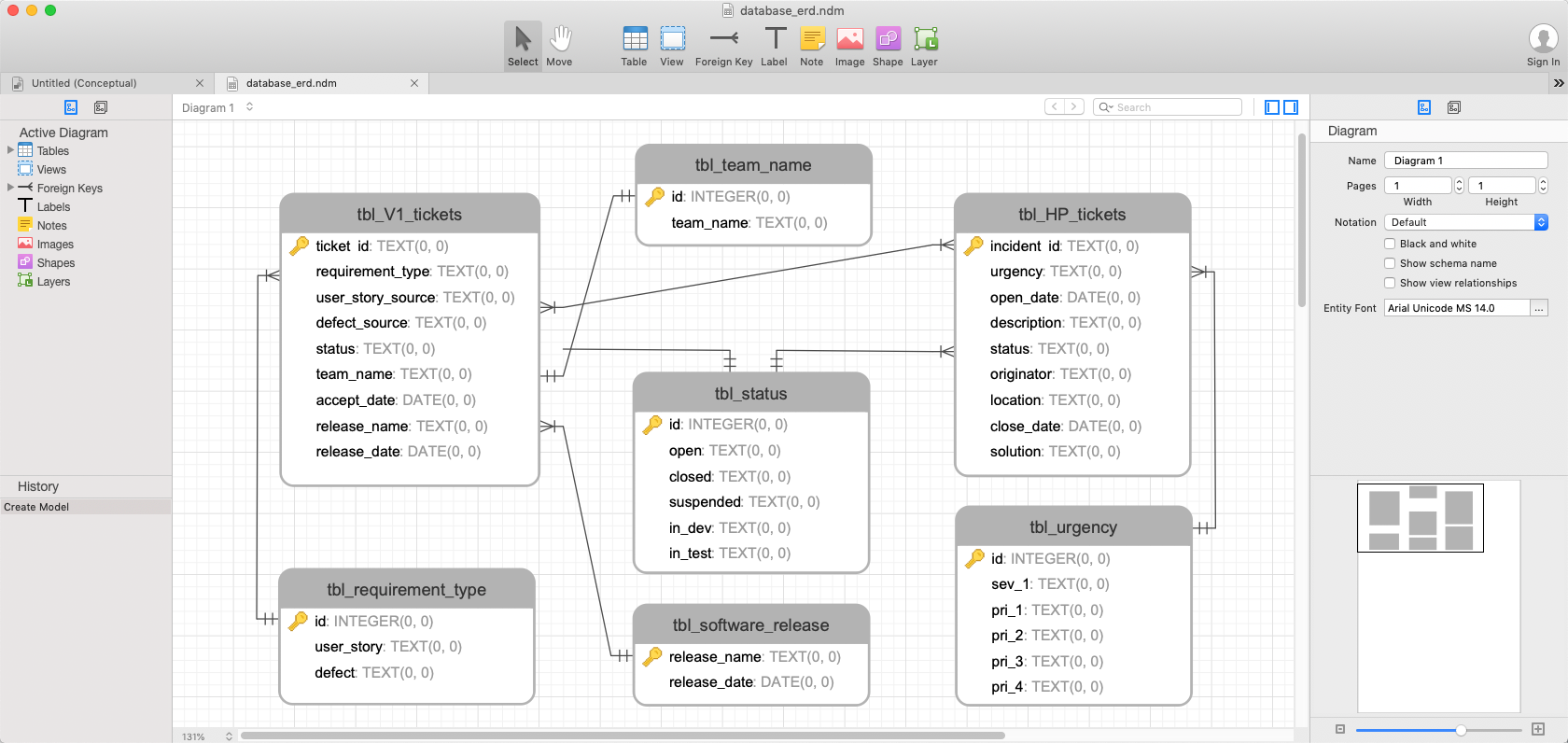

If you find it difficult to get started with drawing an ER diagram, don't worry.

The ERD example below shows an example of an ER entity. In ER models, an entity is shown as a rounded rectangle, with its name on top and its attributes listed in the body of the entity shape. When determining entities, think of them as nouns. Transaction) (note: In ERD, the term "entity" is often used instead of "table", but they are the same). EntityĪn ERD entity is a definable thing or concept within a system, such as a person/role (e.g. In this section, we will go through the ERD symbols in detail. Such an initial model can also be evolved into a physical database model that aids the creation of a relational database, or aids in the creation of process maps and data flow modes.Īn ER Diagram contains entities, attributes, and relationships.
#Tableplus er diagram full
By visualizing a database schema with an ERD, you have a full picture of the entire database schema. Database debugging - To debug database issues can be challenging, especially when the database contains many tables, which require writing complex SQL in getting the information you need.By drawing ER diagrams to visualize database design ideas, you have a chance to identify the mistakes and design flaws, and to make corrections before executing the changes in the database. To avoid ruining the data in a production database, it is important to plan out the changes carefully. Database design - Depending on the scale of change, it can be risky to alter a database structure directly in a DBMS.So, when do we draw ERDs? While ER models are mostly developed for designing relational databases in terms of concept visualization and in terms of physical database design, there are still other situations when ER diagrams can help. In a typical ER design, you can find symbols such as rounded rectangles and connectors (with different styles of their ends) that depict the entities, their attributes, and inter-relationships.


 0 kommentar(er)
0 kommentar(er)
